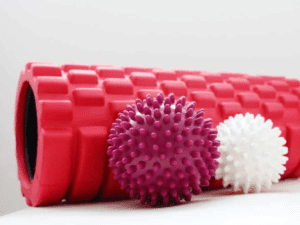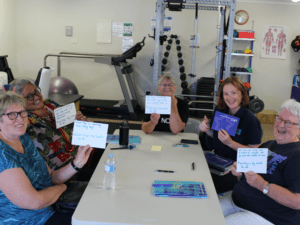Parkinson’s Disease (PD) is a neurological disorder affecting the basal ganglia (American College of Sports Medicine [ACSM], 2003; American College of Sports Medicine [ACSM], 2014; Tseng, Khosravani, Mahnan, Konczak, 2017; Angelucci et al., 2016; Arif Ozturk, Gundogdu, Kocer, Comoglu, Cakci, 2017; Zhou, Gougeon, Nantel, 2018). The basal ganglia produces the majority of dopamine found in the body (ACSM, 2003). However, in PD there is a large loss of dopaminergic neurons in one of the nuclei (substantia nigra) that causes a deficiency of dopamine in the striatum which feeds into the basal ganglia (ACSM, 2003; Angelucci et al., 2016; Tseng et al., 2017). This results in the various physiological changes to the motor and non motor functions of the body (Tseng et al., 2017). PD is a common disorder which has an onset between late-middle adulthood (Tseng et al., 2017; Arif Ozturk et al., 2017; Wilczynski & Polrola, 2017).
Some of the affects of the motor and non-motor symptoms are listed below (Angelucci et al., 2016; ACSM, 2003; ACSM, 2014; Arif Ozturk et al., 2017; Tseng et al., 2017; Wilczynski & Polrola, 2017; Zhou et al., 2018):
Motor Symptoms:
- Gait:
- Decreased walking speed, shortened stride length, increased cadence, larger stride time variation, changes in gait power profiles at the ankle, hip and knee joints, freezing episodes
- Posture:
- Protraction of the head and neck, increased thoracic kyphosis, changes in joint positioning and flattened lumbar lordosis, postural instability
- Deterioration of muscle strength due to dopamine deficiency affecting motor unit recruitment patterns
- Decreased cardiorespiratory fitness
- Decreased balance
Non-Motor Symptoms:
- Emotional disorders (depression)
- Cognitive disorders
- Vegetative symptoms
- Increased fatigue
- Sleep disturbances
- An altered sense of smell
- Decreased proprioceptive function
Clinically, PD is diagnosed when an individual is showing the three axial symptoms (Wilczynski & Polrola, 2017):
- Resting tremor
- Bradykinesia (slowness of movements)
- Muscle rigidity (up-regulated muscle tone)
“Exercise reduces overall risk of developing Parkinson’s Disease in men by as much as 60% if they exercise vigorously beginning early into adulthood”
— ACSM, 2003
It is typically diagnosed using the Hoehn and Yarkr Scale which has five stages (ACSM, 2003; ACSM, 2014; Arif Ozturk et al., 2017):
- Unilateral involvement only
- Bilateral involvement without balance impairment
- Mild-mod bilateral disease, postural instability and physical independence
- Severe- able to walk and stand independently
- Wheelchair/bed ridden
Parkinson’s can be treated with medications to reduce symptoms, however this doesn’t block the progression of PD (Angelucci et al., 2016). Some pharmacological treatments include dopamine replacement therapy and deep brain stimulation which targets specific areas of the basal ganglia (Tseng et al., 2017). These pharmacological treatments primarily treat the bradykinesia and tremors and are less effective as the treatment for balance and gait function (Tseng et al., 2017). Exercise is a great adjunctive therapy for PD to assist with the balance and gait function (Tseng et al., 2017). Exercise training has been shown to improve motor performance, trunk rotation, stability and balance during walking, muscle volume and strength, hand-eye coordination and non motor symptoms (ACSM, 2003). In some cases resistance training and stretching has been shown to increase muscle strength by 16% (Tseng et al., 2017). As stated by ACSM (2003) “Exercise reduces overall risk of developing Parkinson’s Disease in men by as much as 60% if they exercise vigorously beginning early into adulthood”.
The current recommendations for a persons with PD regarding exercise are to (ACSM, 2003; ACSM, 2014):

Accredited Exercise Physiologists undergo training to provide individualised exercise prescriptions to persons with Parkinson’s Disease. To learn more about how exercise can benefit yourself or a friend with Parkinson’s Disease, please get in touch with our Accredited Exercise Physiologists on 0745 993 165.
References
Angelucci, F., Piermaria, J., Gelfo, F., Shofany, J., Tramontano, M., Fiore, M., Caltagirone, C., & Peppe, A. (2016). The effects of motor rehabilitation training on clinical symptoms and serum BDNF levels in parkinson’s disease subjects. Canadian Journal of Physiology and Pharmacology, 94(4), 455-461. https://doi.org/10.1139/cjpp-2015-0322.
American College of Sports Medicine. (2003). ACSM’s exercise management for persons with chronic diseases and disabilities, (3rd ed.). United States of America, USA: Human Kinetics.
American College of Sports Medicine. (2014). ACSM’s guidelines for exercise testing and prescription, (9th ed.). Baltimore, MD: Wolters Kluwer.
Arif Ozturk, E., Gundogdu, I., Kocer, B., Comoglu, S., & Cakci, A. (2017). Chronic pain in parkinson’s disease: Frequency, characteristics, independent factors, and relationship with health-related quality of life. Journal of Back and Musculoskeletal Rehabilitation, 30, 101-108.
Tseng, Y., Khosravani, S., Mahnan, A., & Konczak, J. (2017). Exercise as medicine for the treatment of brain dysfunction: Evidence for cortical stroke, cerebellar ataxia and parkinson’s disease. Kinesiology Review, 6(1), 30-41.
Wilczynski, J., & Polrola, P. (2017). Body posture in patients with parkinson’s disease. Baltic Journal of Health and Physical Activity, 9(3), 87-96.
Zhou, L., Gougeon, M., & Nantel, J. (2018). Nordic walking improves gait power profiles at the knee joint in parkinson’s disease. Journal of Aging and Physical Activity, 26, 84-88.




